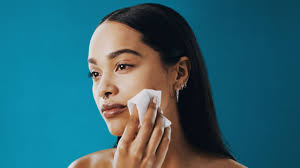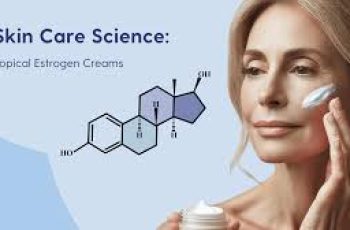
I Still Have Blackheads—Does That Mean My Cleanser Isn’t Working?
It can be incredibly frustrating when you’ve perfected your skincare routine—paying attention to every ingredient, never skipping a step, and always removing your makeup before bed—yet, despite all your efforts, those persistent blackheads refuse to budge. You’ve researched everything from how to address acne to which products work best for your skin type, yet they still appear, clear as day, in your mirror. So what gives?
Having blackheads isn’t something to be ashamed of, and it certainly doesn’t mean you’re failing at your skincare routine. However, it’s completely normal to feel like your products should be working, especially when you’re taking the necessary steps to keep your skin clear. You might find yourself wondering if there is something wrong with your cleanser or if it’s time to consider switching up your skincare routine. With countless cleansers on the market, each with different promises, it can be difficult to know whether the issue lies with your cleanser or if you’re missing a key part of the puzzle. We spoke to dermatologists Dr. Kseniya Kobets and Dr. Nazanin Saedi to break down the causes of blackheads, how to tell if your cleanser is doing its job, and what to look for when choosing the best cleanser for your skin.
Meet the Experts
Dr. Kseniya Kobets, MD, MHS, FAAD is a board-certified dermatologist based in Westchester, New York, who practices at Montefiore Einstein Advanced Care.
Dr. Nazanin Saedi, MD, FAAD is a board-certified dermatologist based in Plymouth Meeting, Pennsylvania, with extensive experience in treating various skin conditions, including acne.
What Causes Blackheads?
First things first: what exactly are blackheads, and why do they seem to appear out of nowhere despite your best efforts? In simple terms, blackheads are a form of acne. More specifically, they are clogged pores (also known as comedones) that have been filled with a combination of excess oil, keratin, and sometimes even makeup. The hallmark of a blackhead is its dark appearance, which is caused by the oxidation of the oil when it is exposed to air. This oxidation reaction turns the contents of the pore dark, making the blockage visible on the skin’s surface.
Dr. Kobets explains, “Blackheads are pores that have become congested with excess oil, keratin, and debris from makeup or skincare products. When exposed to air, the oils undergo oxidation, turning dark and giving the blackhead its characteristic appearance.” Dr. Saedi further clarifies that the black color isn’t caused by dirt, as many people believe, but rather by a chemical reaction between the clogged oils and air.
Blackheads most commonly develop around the nose and T-zone, the areas of the face that tend to produce the most oil. However, they can also appear on other parts of the body, including the chest, back, and ears, especially in individuals with oily skin.
How to Tell If Your Cleanser Is Too Weak
Now that we understand what causes blackheads, let’s get into the heart of the matter: the cleanser. If you’re still battling blackheads despite following your skincare regimen, it might be tempting to assume that your cleanser isn’t up to the task. But Dr. Kobets cautions against jumping to conclusions. While it’s possible that your cleanser may be too weak, it’s also important to remember that the problem could lie elsewhere in your routine, or it may be more complex than simply relying on a stronger product.
“Many people think that the best way to clear blackheads is by using a stronger cleanser,” Dr. Kobets says. “However, over-cleansing can actually do more harm than good.” Cleansing too aggressively can strip the skin of its natural oils, leading to dryness and irritation. This can disrupt the skin barrier and affect the microbiome, the natural ecosystem of bacteria that protects your skin.
Dr. Saedi adds that instead of going for harsh, stripping cleansers, you should aim for a balanced skincare routine that includes acne-fighting ingredients alongside ingredients that replenish and soothe the skin. “A consistent skincare routine that incorporates ingredients like glycerin, ceramides, niacinamide, hyaluronic acid, peptides, and botanicals will help calm the skin and support a healthy barrier while also working to fight acne.”
Ultimately, the key is not to force your skin into being “squeaky clean” after every wash. Instead, focus on a routine that will keep your skin balanced and able to defend itself naturally, while still addressing the blackheads and breakouts.
What to Look for in a Cleanser
So, how do you know if your cleanser is effective, and what features should you look for to clear blackheads? Dr. Kobets suggests focusing on the following elements when selecting your cleanser:
Formulation: The type of cleanser you use should be aligned with your skin type. For those with oily skin, a foaming cleanser can help remove excess oil and keep pores clear. However, be cautious with these products—overuse can lead to stripping the skin of its natural oils, which may compromise the skin’s barrier and microbiome. For those with dry or sensitive skin, a hydrating cleanser is a better option, as it will cleanse without causing additional dryness or irritation.
Benzoyl Peroxide: Dr. Kobets recommends benzoyl peroxide as an ingredient to look for in your cleanser. This ingredient is known for its ability to clear excess oil, dirt, and makeup from the oil glands, helping to prevent blackheads and acne. However, a word of caution: benzoyl peroxide can bleach fabrics, so it’s best to use white towels or bed linens when incorporating this ingredient into your routine. It’s also important to ensure that you’re using fresh products, as expired benzoyl peroxide can become irritating to the skin.
Salicylic Acid: Another essential ingredient for combating blackheads is salicylic acid, a beta-hydroxy acid (BHA) that is lipophilic (oil-loving). “Salicylic acid works by penetrating deep into the pores to dissolve oil and debris,” Dr. Kobets explains. “It also has anti-inflammatory properties, which can help reduce irritation, and it may improve skin tone and pigmentation over time.”
Although salicylic acid is highly effective for managing blackheads, Dr. Kobets advises against using benzoyl peroxide and salicylic acid at the same time to avoid excessive irritation. If you’re using both, alternate them between days or use them in combination with other soothing ingredients.
Byrdie Tip: If you have sensitive skin, start incorporating either benzoyl peroxide or salicylic acid into your routine gradually, a few times a week, until your skin builds up tolerance.
Additional Tips for Treating Blackheads
While a good cleanser is a great first step, addressing blackheads requires a more comprehensive approach. Dr. Kobets and Dr. Saedi share additional tips that can help improve the appearance of blackheads and keep them at bay:
Retinoids: “Using a retinoid daily can be extremely beneficial for acne-prone skin,” Dr. Kobets recommends. Retinoids promote cellular turnover, helping to keep pores clear of excess oil and dead skin cells. They also reduce the size of pores over time, making them an excellent treatment for blackheads. Retinoids can be combined with other acne-fighting ingredients like benzoyl peroxide or salicylic acid to maximize their effectiveness.
Be Mindful of Moisturizers: Dr. Kobets advises that some moisturizers, particularly those containing dimethicone or other heavy silicones, may contribute to oil buildup and clogged pores. Opt for a non-comedogenic, lightweight moisturizer that won’t contribute to congestion.
Spot Treatments: If blackheads persist in specific areas, spot treatments can be a great option. Use them as directed to target problem spots without over-applying, as excessive use of spot treatments can lead to irritation.
Light Therapy: Another option is blue and red light therapy. These types of therapy have been shown to reduce acne-causing bacteria and inflammation. Dr. Saedi suggests using light therapy masks regularly if you’re committed to this approach, but be aware that they can be a splurge.
In-Office Treatments: If at-home skincare isn’t enough, in-office treatments like Hydrafacials, chemical peels, and laser therapies can help clear out pores and reduce oil production. These treatments, done under the supervision of a dermatologist, can be effective for those with persistent blackheads or more severe acne.
The Final Takeaway
When it comes to blackheads, the most important thing to remember is that consistency is key. Skincare is not an instant fix—effective treatment takes time, and it requires patience. Dr. Saedi emphasizes that the goal of a skincare routine is to balance oil production while protecting the skin barrier. Overdoing it with harsh products can harm your skin in the long run.
If you’re still struggling with blackheads, consulting with a dermatologist can help you develop a personalized treatment plan. Remember, acne is a normal skin condition, and while it can feel frustrating, it’s something that can be controlled with the right care. With the right products and treatments, you can keep blackheads under control and maintain clear, healthy skin.


